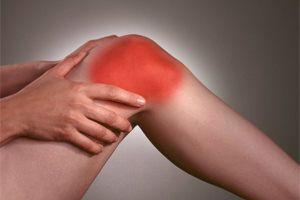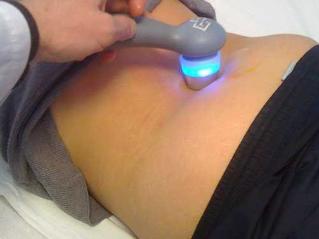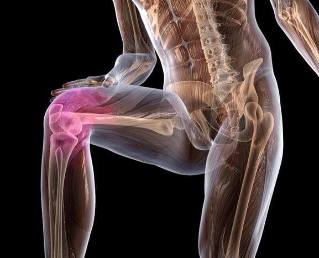Osteoarthritis is a chronic disease in which the connective tissue structure of the musculoskeletal system is damaged. The disease is characterized by a gradual course, against the background of which the cartilage tissue is gradually destroyed. This pathology is diagnosed in many people over the age of 65, since one of the factors contributing to the formation of this disease is the body's natural aging process.
Description of the disease
Post-traumatic, endocrine and inflammatory disease, excessive physical overload or, on the contrary, inactivity can cause the development of degenerative-dystrophic disease. The main signs of osteoarthritis: pain in the joint area with edema and limited activity.
To diagnose the disease, they resort to instrumental techniques - X-rays, arthroscopy, computed tomography and MRI. In the treatment of osteoarthritis of stages 1 and 2, conservative methods are used - medication, physiotherapy, massage and physiotherapy exercises. If irreversible destructive changes have occurred in the joint tissue, then an operation is necessary - arthrodesis or stent.
Pathogenesis
Osteoarthritis is characterized by pronounced changes in the structure of connective tissue. The formation of deforming erosions occurs on the cartilage, which destroys collagen fibers and proteoglycans, which contain proteins (5-10%) and glycosaminoglycans (90-95%).
As a result, the stability of the collagen network decreases, metalloproteinase is released, and all forms of extracellular matrix proteins are destroyed. The acceleration of destruction is due to the fact that the biosynthesis of collagenases and stromelysin increases.
Typically, when enzymes are present in the body in normal amounts, they keep the level of cytokines - small molecules of peptide information - under control. If osteoarthritis progresses, the concentration of this protein decreases, because enzymes that affect the cartilage are released in a large volume.
As a result, proteoglycans with a distorted structure absorb water which they cannot hold. Because of this, excess fluid enters the collagen fiber, which begins to "swell", resulting in loss of strength and elasticity.
The qualitative and quantitative composition of joint fluid is also undergoing changes for the worse. Against the background of osteoarthritis, a decrease in the concentration of hyaluronic acid is observed there. The transport of nutrients and oxygen to the hyaline cartilage tissue stops in the volume necessary for its restoration. In the cartilage, soft foci are formed, followed by the formation of cracks, specific necrotic growths. Then the bare heads begin to be exposed, microtraumas appear on the background of displacement in relation to each other.
What causes the development of the disease
The reason why primary (idiopathic) osteoarthritis develops has not yet been established. Such a disease develops without the influence of any factors, so doctors are of the opinion that the cause of such a problem lies in the propensity at the genetic level to premature destructive processes in the cartilage. The formation of secondary osteoarthritis occurs as a complication of other joint diseases or against the background of injury.
The presence of the following elements can cause the formation of a degenerative-dystrophic pathology:

- damage to the joint tissue or located near the connective tissue structure in the form of a fracture, dislocation, trauma to the meniscus, partial rupture or'complete separation of bone from muscle and ligament tissue, tendons;
- congenital dysplastic disorder in the development of joints;
- disturbances in the functionality of the glands of the endocrine system, metabolic disturbances;
- rheumatism or rheumatic fever;
- polyarthritis, rheumatoid arthritis, reactive, metabolic, gouty or psoriatic;
- purulent arthritis, the cause of which lies in the effects of streptococci, epidermis or Staphylococcus aureus;
- tuberculosis anywhere, brucellosis, chlamydia, gonorrhea, syphilis;
- degenerative-dystrophic pathologies, eg osteochondritis dissecans.
The increased mobility of joint tissue, which is observed against the background of the production of special collagen fibers in the body, can contribute to the formation of osteoarthritis.A similar phenomenon is observed in 10% of people living on the planet, it is not considered a disease.Although against the background of hypermobility there is a weakness of the tendon-ligament system, due to which a person is likely to injure himself, especially in the ankle joint, in the formsprains and rupture of ligament tissue, dislocations.
In some cases, problems with hematopoietic function (for example, the presence of hemophilia) can lead to the formation of osteoarthritis. Against the background of hemarthrosis (hemorrhage into the cavity of the joint), the blood supply to the cartilage tissue deteriorates, which begins to collapse.
Among the predisposing factors, it is worth noting the presence of old age, frequent loads on the joint tissue exceeding the limits of its strength, excessive body weight, undergone operations, hypothermia.
The risk group includes postmenopausal women, citizens living in adverse environmental conditions or in contact with toxic chemicals. If the diet does not contain enough vitamins and minerals, conditions arise for the gradual destruction of hyaluronic cartilage tissue.
Symptoms

Osteoarthritis is dangerous because the first stage of formation is asymptomatic. The manifestation of the clinical picture of the disease occurs over time, the main symptoms appear with significant destruction of cartilage.At first, the patient experiences a mild pain syndrome with no clear localization.This occurs after physical exertion - heavy lifting, sports training.
In some cases, the first sign of a person is the appearance of crunches and clicks when flexing or extending the joints. The patient notices that it is sometimes difficult to move around. Although at the early stage of the formation of osteoarthritis, problems with mobility appear only in the morning and quickly disappear.
With the further development of pathology, painful sensations begin to disturb at night, which disrupt sleep function, as well as chronic fatigue. When the disease progresses to degree 2, the intensity of pain increases against the background of changes in weather conditions, exacerbations of chronic diseases, acute respiratory viral infections.
Physical activity decreases considerably. Mobility is hampered by the thinning of cartilage tissue and the deliberate restriction of the patient's movement in an attempt to prevent pain. This increases the load on the tissue of the opposite joint, which contributes to its subsequent destruction.
Osteoarthritis is characterized by other peculiarities:
- pain that causes the appearance of spasms in the skeletal muscles and the formation of muscle contracture (limited passive motor function of the joint);
- crackles in joint tissue, clicks, crackles with movements of a constant nature, appearing practically with every movement of the bones relative to each other;
- frequent painful muscle cramps;
- deformity of the joints, which leads to impaired posture and gait
- pronounced deformity to the curvature of the joints with a significant decrease or complete absence of motor activity in the context of grade 3 osteoarthritis.
If osteoarthritis of the knee, ankle, or hip has developed to stage 3, a person should use a cane or crutches to move.
If you do not start treatment on time, the disease begins to progress, relapses begin to bother you regularly, in addition, exacerbations appear more and more often over time. Stiffness in the morning does not go away for a long time, gradually becomes permanent.
When examining a person with stage 1 osteoarthritis, the doctor notices only slight edema of the joint tissue with complete preservation of motor function. Stage 2 of the disease is manifested by pain and slight deformity on palpation. Bone thickenings form near the synovial cavity.
Osteoarthritis is characterized by the formation of synovitis - inflammation of the synovia in the hip, ankle, knee or shoulder joint. The main symptom of this disease is the development of a rounded joint near the joint, when you press on it you can feel how the fluid contents move. With acute synovitis, the temperature can reach 37-38 degrees, headaches and digestive problems may occur.

Diagnostic measurements
The disease is diagnosed on the basis of the results of the study by instrumental methods, clinical features, anamnestic data, patient complaints. In this case, a clinical study of blood and urine is not very informative - all indicators remain within the normal range, if the cause of osteoarthritis is not metabolic problems.
If synovitis develops, there is an increase in the rate of erythrocyte sedimentation (up to 30 mm / h), leukocytes and fibrinogen increase in the bloodstream.This indicates the presence of acute or chronic inflammation in the body.Biochemical and immunological parameters change with osteoarthritis of the secondary form.
The most informative way to detect degenerative-dystrophic diseases is the radiography in 2 projections (lateral and right).
On the x-ray image, osteoarthritis is visualized as follows:
- At the initial stage, there are no radiological signs.
- At the first stage, the pathology is visualized as an indistinct and uneven narrowing of the joint cavity. The edges of the bone plates are slightly flattened, initial osteophytes are formed (sometimes they are absent).
- In the second stage, the picture shows an image in the form of a pronounced narrowing of the cavity in the joint, which exceeds the norm by 2-3 times. Osteophytes are formed in large numbers, the formation of subchondral osteosclerosis is noted. Illuminations resembling cysts appear in the appendages.
- In the third stage, the image shows pronounced subchondral osteosclerosis and large marginal osteophytes. The joint space is considerably narrowed.
- In the fourth stage, coarse massive osteophytes are formed, the joint space is almost completely fused, the bony appendages forming the joint are deformed and compacted.
If the doctor has doubts about the diagnosis after reviewing the x-ray images, the patient is ordered for a CT scan. To assess the condition of the connective tissue located near the joint, an MRI is performed. The use of a contrast agent allows you to dynamically monitor how the tissues are supplied with blood, in order to determine the degree of inflammation in the synovitis.

Treatment of osteoarthritis
At the moment, it is impossible to completely cure osteoarthritis, since pharmacological agents that restore cartilage tissue do not exist.The main goal of treatment is to prevent the further development of the disease, to keep the joints mobile.Treatment of osteoarthritis is long-term, complex, involves the use of local and systemic drugs.
Patients should not overload the joints; it will be necessary to limit motor activity with the help of orthopedic devices - orthotics, elastic bandages. Overweight people will need to adjust their diet in order to lose weight over time and start a diet.
When stable remission is achieved, the patient should perform therapeutic gymnastic exercises every day. At first, you will need to do this under the supervision of a specialist, and in the future you will have to do gymnastics at home yourself. In addition to physiotherapy, you can sign up for the swimming pool, yoga or cycling.
To reduce the intensity of pain, the use of drugs belonging to different pharmacological groups is prescribed:
- Nonsteroidal anti-inflammatory drugs in tablets, ointments, solutions for intravenous injections.
- Intra-articular injections of anesthetics with the addition of glucocorticosteroids.
- Muscle relaxants to relieve muscle spasms and contractures.
In addition, the treatment regimen for osteoarthritis involves the use of B vitamins, sedatives, if necessary, antidepressants and tranquilizers. It is mandatory to appoint chondroprotectors in the form of a long course.Means in this group contribute to the partial restoration of cartilage.
In order to increase the clinical activity of joint tissue, it is necessary to perform physiotherapeutic procedures - laser therapy, magnetotherapy, UHF.
Any painful manifestation in the area of the joints should be the basis for an immediate visit to the doctor. The treatment carried out in the early stages of the development of osteoarthritis makes it possible to stop destructive processes in the cartilage, prevent disabilities and disabilities.

























